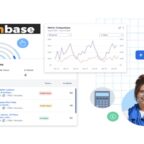In today’s fast-paced world, businesses need to develop high-quality apps at a rapid pace to stay ahead of the competition. To ensure that the application is delivered on time, it is essential to automate the testing process. Automation testing helps businesses to speed up their testing process while also improving the quality of their software.
With the increasing demand for automation testing, there has been a rise in the number of no-code automation testing tools available in the market. Choosing the right no-code automation testing tool for your project can be a daunting task. In this article, we will discuss the factors to consider when selecting a no-code automation testing tool.
Factors to Consider
Ease of Use
When choosing a no-code automation testing tool, ease of use should be one of the main factors to consider. The tool should be easy to learn and use, even for non-technical users. It should have a user-friendly interface, and the testing process should be intuitive and straightforward. A tool that requires extensive training or technical knowledge to operate can be time-consuming and costly for your business.
Functionality
The no-code automation testing tool you choose should have all the necessary functionality required for your project. It should support the programming languages and platforms used in your project. The tool should have features that enable you to create automated test scripts quickly and efficiently. Some tools provide a pre-built library of test cases, which can help you to create test scripts quickly and effectively.
Integrations
It is essential to choose a no-code automation testing tool that integrates with other tools in your development ecosystem. The tool should integrate with your test management system, version control system, and continuous integration and delivery tools. Integration with these tools will help you to automate your testing process further and make it more efficient. A tool that does not integrate with your development ecosystem can be challenging to manage and may require additional resources.
Support and Community
When choosing a no-code automation testing tool, it is essential to consider the support and community available for the tool. The tool’s vendor should provide excellent support and documentation. It should also have an active community that can help you with any issues you might encounter while using the tool. A tool with a robust support system and active community can help you to resolve issues quickly and efficiently.
Cost
The cost of the no-code automation testing tool is also an essential factor to consider. The tool should be cost-effective and provide value for money. You should compare the pricing of different tools and choose the one that fits your budget while also meeting your requirements. It is also essential to consider the cost of maintaining and upgrading the tool over time.
Security
Security is an essential factor to consider when selecting a no-code automation testing tool. The tool should be secure and not expose your sensitive data to potential threats. It should have features that enable you to encrypt your data and protect it from unauthorized access. You should also consider the tool’s compliance with industry standards and regulations, such as GDPR and HIPAA.
Scalability
The no-code automation testing tool you choose should be scalable and be able to handle the growing demands of your project. It should be able to handle a large number of test cases and support multiple testing environments. A tool that is not scalable can limit your ability to expand your testing process and hinder the growth of your business.
Simple Steps to Select the Right Test Automation tool
Step 1: Thoroughly Understand Project Requirements
Before beginning the process, it is important to gain a deep understanding of project requirements, such as the project type (web/desktop/mobile), scope of the project, and the existing team’s strength in coding language. The success of any tool relies on the need – what specifically needs to be automated and how many test cases need automation.
Step 2: Consider Existing Test Automation Tool as a Benchmark
To evaluate and determine the best automation tool for the project, the team considered Selenium Test Automation Tool as a benchmark. It is important to understand the advantages and drawbacks of Selenium Web Driver framework before evaluating other tools.
Step 3: Identify Key Criteria Suitable for a Project
There are several key points to consider before deciding on the best-fit automation tool for a project. Some of the key criteria that were used to evaluate the best tool in the consulting team’s case are:
- Ease of developing and maintaining the scripts
- Ease of test execution for non-technical users
- Support for web, desktop, and mobile applications
- Intuitive test report
- Cross-browser testing support
- Support for keyword and data-driven testing
- Technical support and assistance
- Language support like C#, Java, Python, and others
- TFS DevOps integration with builds
- Pricing
Step 4: Leverage Pugh Matrix Technique for Analysis
Using some of the key criteria as vital parameters, the team leveraged Pugh Matrix technique to choose the best tool for mid-scale web, desktop, and mobile test automation. The Pugh matrix demonstrated the pros and cons of various tools, such as Ranorex, Test Complete, Ghost Inspector, and Test Studio, keeping Selenium Web Driver as the benchmark.
Conclusion
Choosing the right no-code automation testing tool for your project is crucial to ensure the success of your software development process. You should consider factors such as ease of use, functionality, integrations, support and community, cost, security, and scalability when selecting a no-code automation testing tool. By considering these factors, you can choose a tool that meets your requirements and helps you to automate your testing process efficiently.

Aimee Garcia is a Marketing Consultant and Technical Writer at DailyTechTime. She has 5+ years of experience in Digital Marketing. She has worked with different IT companies.



